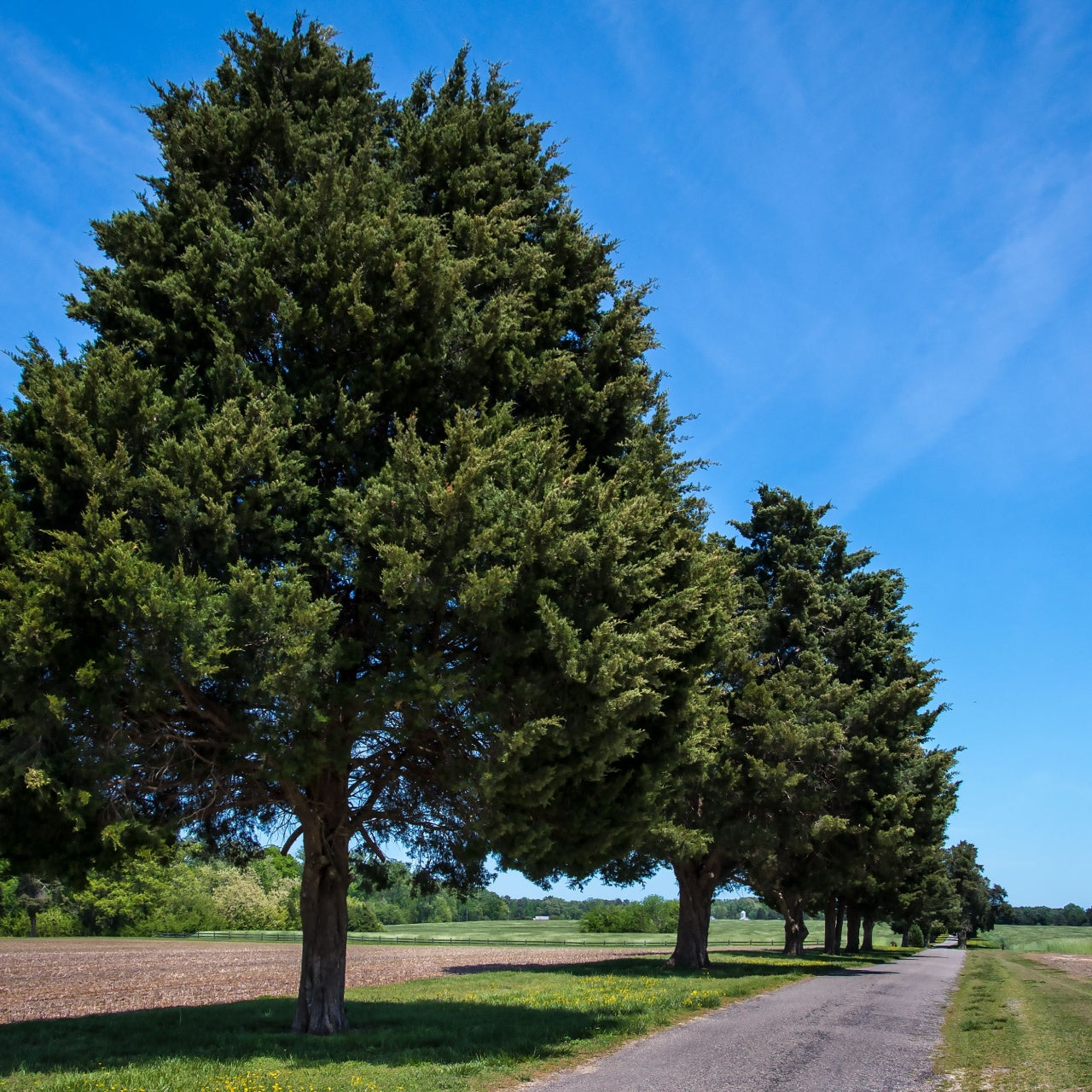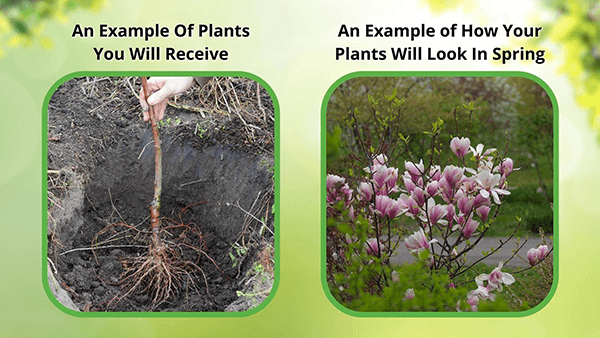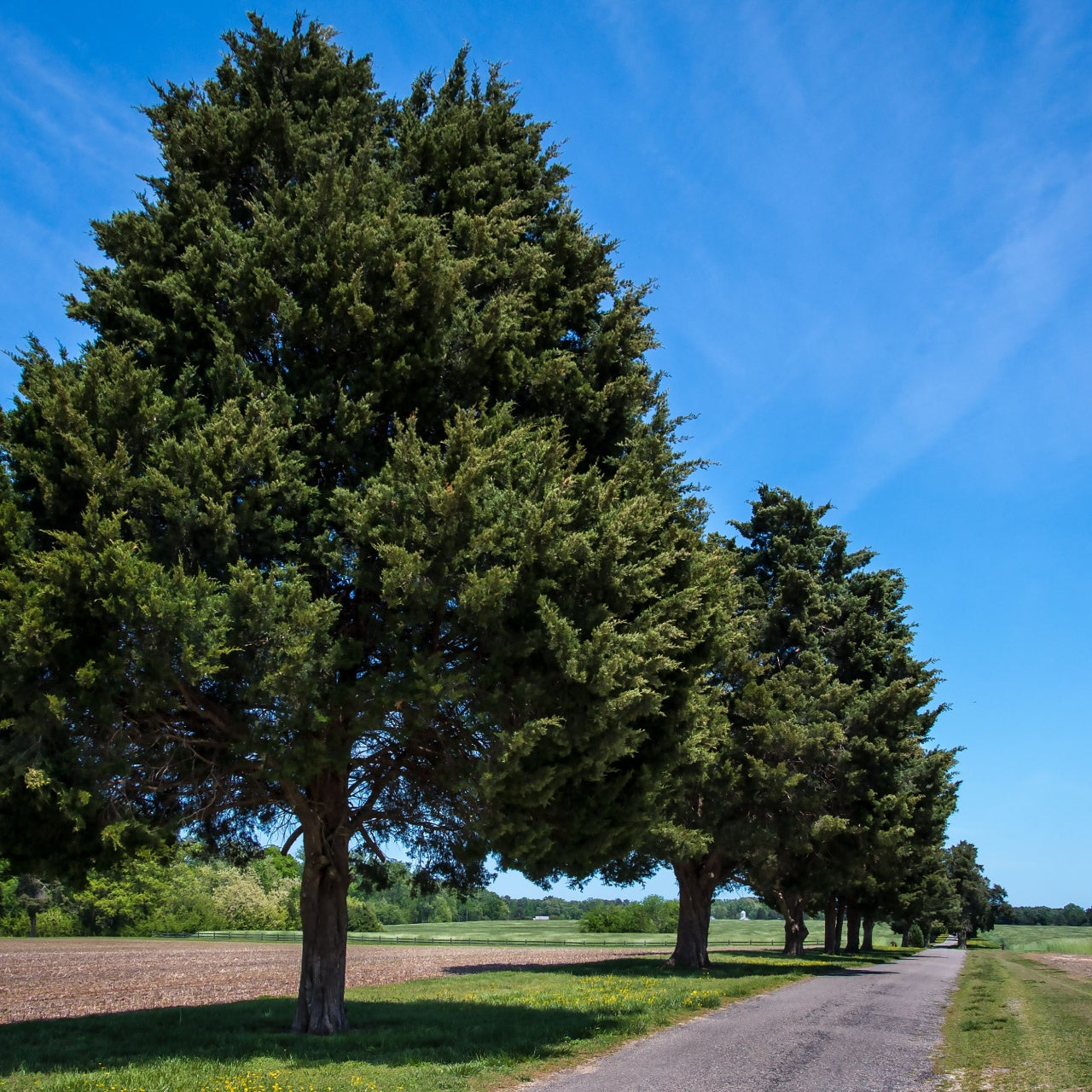



Removes & Absorbs Toxins
Improves Air Quality
Low maintenance & easy to grow
Buy Red Cedar Juniperus Virginiana Online Wholesale
Eastern Red Cedar Trees is a gorgeous evergreen tree that grows in a beautiful conical shape. They are slow growers and grow at a rate of up to 1 foot per year. They will do well in most soil conditions but prefer fertile, moist soil with good drainage.
Eastern Red Cedar Trees Have Dark Green to Scarlet Needles
It must be well taken care of and kept after planting to take off and become a valuable type in the first couple of years. During the spring and summer months, it has dark green needles. Then, as autumn approaches, the needles slowly change, and they have a scarlet tint in the winter months.
The Tree Has A Distinct Smell
It has a distinct smell. Sometimes, people take a few clippings off it to put in their homes during the holidays. It is also known for making furniture.
These Trees Produce seeds Through Pine Cones
These trees have pine cone seeds, each with 10-15 seeds. It also has scale-like leaves, making it easy to pick out when others are around. Eastern Red Cedar's bark becomes easy to tear off as it matures.
Eastern Red Cedar Hight And Info
Mature Width: 15'-20'Mature Height: 45'-65'Growth/Year: 1-2 feet a year until it has reached maturity ageSunlight: Full sunSoil Conditions: Fertile, moist soilBotanical Name: Juniperus virginiana
This Tree is a fantastic choice for tough spots. It is highly drought-tolerant and extremely long-lived. Though it's a juniper, it shares the common history of the true Cedrus species, which belong to the genus Cedrus and are native to the Middle East. All these trees produce cones that are both male and female. Their valuable cedar wood is famous for its fragrance and durability. Even the young trees establish quickly. The Eastern Cedar Tree is great for tough, sunny spots.

This Is How Your Plants Will Look upon Delivery
Shipping date depends on the date displayed and chosen when you order from the product's page.
We do not offer warranties on products after 5 days past receiving your plants.
By signing up, you agree with our privacy policy.






